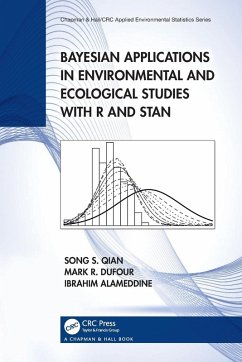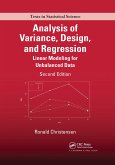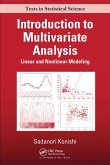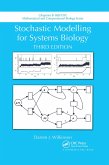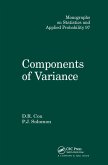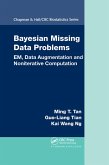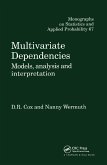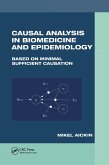Song S. Qian, Mark R. Dufour, Ibrahim Alameddine
Bayesian Applications in Environmental and Ecological Studies with R and Stan
Song S. Qian, Mark R. Dufour, Ibrahim Alameddine
Bayesian Applications in Environmental and Ecological Studies with R and Stan
- Broschiertes Buch
- Merkliste
- Auf die Merkliste
- Bewerten Bewerten
- Teilen
- Produkt teilen
- Produkterinnerung
- Produkterinnerung
The book is primarily aimed at graduate students and researchers in the environmental and ecological sciences, as well as environmental management professionals. This is a group of people representing diverse subject matter fields, which could benefit from the potential power and flexibility of Bayesian methods.
Andere Kunden interessierten sich auch für
![Analysis of Variance, Design, and Regression Analysis of Variance, Design, and Regression]() Ronald ChristensenAnalysis of Variance, Design, and Regression64,99 €
Ronald ChristensenAnalysis of Variance, Design, and Regression64,99 €![Introduction to Multivariate Analysis Introduction to Multivariate Analysis]() Sadanori KonishiIntroduction to Multivariate Analysis66,99 €
Sadanori KonishiIntroduction to Multivariate Analysis66,99 €![Stochastic Modelling for Systems Biology, Third Edition Stochastic Modelling for Systems Biology, Third Edition]() Darren J. WilkinsonStochastic Modelling for Systems Biology, Third Edition69,99 €
Darren J. WilkinsonStochastic Modelling for Systems Biology, Third Edition69,99 €![Components of Variance Components of Variance]() D R CoxComponents of Variance84,99 €
D R CoxComponents of Variance84,99 €![Bayesian Missing Data Problems Bayesian Missing Data Problems]() Ming T TanBayesian Missing Data Problems82,99 €
Ming T TanBayesian Missing Data Problems82,99 €![Multivariate Dependencies Multivariate Dependencies]() D R CoxMultivariate Dependencies82,99 €
D R CoxMultivariate Dependencies82,99 €![Causal Analysis in Biomedicine and Epidemiology Causal Analysis in Biomedicine and Epidemiology]() Mikel AickinCausal Analysis in Biomedicine and Epidemiology82,99 €
Mikel AickinCausal Analysis in Biomedicine and Epidemiology82,99 €-
-
-
The book is primarily aimed at graduate students and researchers in the environmental and ecological sciences, as well as environmental management professionals. This is a group of people representing diverse subject matter fields, which could benefit from the potential power and flexibility of Bayesian methods.
Produktdetails
- Produktdetails
- Verlag: Chapman and Hall/CRC
- Seitenzahl: 416
- Erscheinungstermin: 26. August 2024
- Englisch
- Abmessung: 234mm x 156mm x 22mm
- Gewicht: 629g
- ISBN-13: 9781032290072
- ISBN-10: 1032290072
- Artikelnr.: 71237293
- Herstellerkennzeichnung
- Libri GmbH
- Europaallee 1
- 36244 Bad Hersfeld
- gpsr@libri.de
- Verlag: Chapman and Hall/CRC
- Seitenzahl: 416
- Erscheinungstermin: 26. August 2024
- Englisch
- Abmessung: 234mm x 156mm x 22mm
- Gewicht: 629g
- ISBN-13: 9781032290072
- ISBN-10: 1032290072
- Artikelnr.: 71237293
- Herstellerkennzeichnung
- Libri GmbH
- Europaallee 1
- 36244 Bad Hersfeld
- gpsr@libri.de
Song S. Qian is a professor at The University of Toledo, Department of Environmental Sciences. He earned a PhD in environmental sciences and an MS in statistics from Duke University. He has worked in both environmental consulting and academia for more than 25 years. His work is focused on the application of statistics in environmental and ecological data analysis and modeling. His publication of such applications cover a wide range of topics, including wetland nutrient retention, lake eutrophication, water quality compliance assessment, drinking water safety, fisheries management, effects of climate change, and quantitative chemistry. He has taught graduate-level applied statistics to students in environmental science and ecology for 25 years. He authored and co-authored more than 115 research papers in peer-reviewed journals and a book in environmental and ecological statistics (currently in its second edition). Mark R. DuFour earned a PhD in biology with a focus in ecology from The University of Toledo. He has worked in the fisheries field for more than 15 years, including periods with the New York State Department of Environmental Conservation and Ohio Department of Natural Resources. He is currently a fisheries biologist with the U.S. Geological Survey - Great Lakes Science Center. Dr. DuFour focuses on the quantitative aspects of fisheries science, seeks opportunities to apply Bayesian hierarchical modeling, and has contributed to 23 peer-reviewed publications. His quantitative training includes a combination of course work, diligent advisement, and on-the-job training through application. In contributing to this book, he hopes to encourage other science practitioners to look behind the statistical analysis curtain when developing ecological and environmental models. Ibrahim Alameddine is an associate professor at the American University of Beirut, Department of Civil and Environmental Engineering. He earned his PhD in environmental sciences from Duke University. His research interests focus on advancing environmental monitoring and assessment, particularly in freshwater systems suffering from anthropogenic eutrophication and harmful algal blooms. His work concentrates on advancing the use of statistics for the effective monitoring, modeling, and management of environmental systems. Dr. Alameddine has taught several graduate courses on environmental statistics, water quality modeling, and geospatial analysis. He has published more than 60 peer-reviewed manuscripts and scientific reports. In addition to his academic position, he serves as a consultant to several local and regional governmental bodies as well as international organizations working in the environmental field.
1. Overview 2. Bayesian Inference and Monte Carlo Simulation 3. An Overview
of Bayesian Inference 4. Environmental Monitoring and Assessment - Normal
Response Models 5. Population and Community: Count Variables 6.
Hierarchical Modeling and Aggregation 7. Bayesian Applications 8.
Concluding Remarks
of Bayesian Inference 4. Environmental Monitoring and Assessment - Normal
Response Models 5. Population and Community: Count Variables 6.
Hierarchical Modeling and Aggregation 7. Bayesian Applications 8.
Concluding Remarks
1. Overview
2. Bayesian Inference and Monte Carlo Simulation
3. An Overview of Bayesian Inference
4. Environmental Monitoring and Assessment - Normal Response Models
5. Population and Community: Count Variables
6. Hierarchical Modeling and Aggregation
7. Bayesian Applications
8. Concluding Remarks
2. Bayesian Inference and Monte Carlo Simulation
3. An Overview of Bayesian Inference
4. Environmental Monitoring and Assessment - Normal Response Models
5. Population and Community: Count Variables
6. Hierarchical Modeling and Aggregation
7. Bayesian Applications
8. Concluding Remarks
1. Overview 2. Bayesian Inference and Monte Carlo Simulation 3. An Overview
of Bayesian Inference 4. Environmental Monitoring and Assessment - Normal
Response Models 5. Population and Community: Count Variables 6.
Hierarchical Modeling and Aggregation 7. Bayesian Applications 8.
Concluding Remarks
of Bayesian Inference 4. Environmental Monitoring and Assessment - Normal
Response Models 5. Population and Community: Count Variables 6.
Hierarchical Modeling and Aggregation 7. Bayesian Applications 8.
Concluding Remarks
1. Overview
2. Bayesian Inference and Monte Carlo Simulation
3. An Overview of Bayesian Inference
4. Environmental Monitoring and Assessment - Normal Response Models
5. Population and Community: Count Variables
6. Hierarchical Modeling and Aggregation
7. Bayesian Applications
8. Concluding Remarks
2. Bayesian Inference and Monte Carlo Simulation
3. An Overview of Bayesian Inference
4. Environmental Monitoring and Assessment - Normal Response Models
5. Population and Community: Count Variables
6. Hierarchical Modeling and Aggregation
7. Bayesian Applications
8. Concluding Remarks

